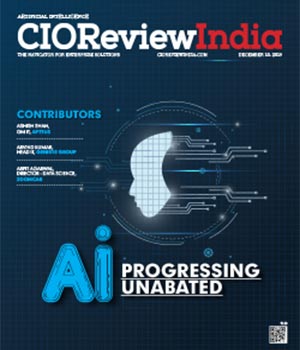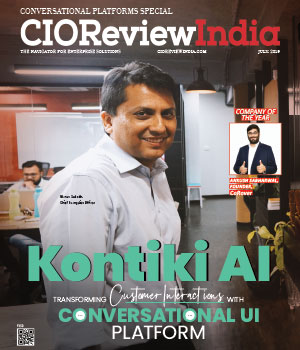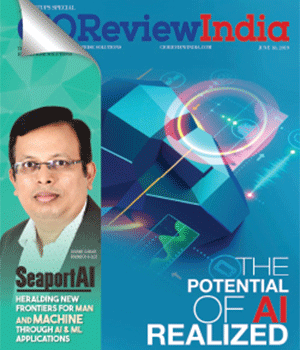
How AI & Cloud technology with hardware can render effective solutions to enhance road safety
Janifha Evangeline | Friday, 04 August 2023, 10:14 IST

In a recent interaction with CIOTechOutlook, Teja Gudena, Senior Vice President, Engineering Devices, Netradyne shares his views on how AI & cloud technology with hardware can provide effective solutions to improve road safety, how are the potential challenges or limitations in implementing cutting-edge vision technology to enhance road safety can be addressed, and more.
Teja Gudena is a founding team member and currently holds the position of Senior Vice President - Devices at Netradyne Technology, leveraging his extensive background spanning over 17 years in international roles encompassing mobile platforms R&D and product development. Teja excels in developing new platforms and systems while harboring a deep passion for pioneering technology trends and driving their adoption into the mainstream.
As technology advances, how can fleet safety be made more efficient?
Technology integration can empower fleets to achieve enhancements including improved fleet safety and operational efficiency. Utilizing vision-based technologies enable real-time vehicle monitoring, tracking driver behavior, and reducing accidents, resulting in safety and fuel efficiency. Safety technologies like collision avoidance systems and lane departure warnings can significantly reduce the risk of accidents. Such Driver Monitoring Systems provide valuable insights into individual performance, enabling feedback and incentives for safe driving practices. In addition, incident reporting and analysis help identify root causes, leading to corrective actions and preventing future occurrences.
By embracing these technological advancements, fleet operators can create a safer environment for drivers, passengers, and other road users, ultimately reducing accidents and improving overall fleet safety efficiency.
How can AI and cloud technology with hardware provide effective solutions to improve road safety?
The combination of AI, cloud technology, and hardware devices provides intelligent monitoring, advanced driver assistance, and data-driven decision-making. By integrating computer vision into the hardware, drivers are provided with an AI-enabled companion within the cabin.
Netradyne's Driver•i is built on the same fundamental principles. It utilizes high-definition cameras equipped with built-in deep learning processors, allowing it to capture visually complex information in near real-time and process directly on the device. With GPS and LTE connectivity, gyrometers, accelerometers, and sensors, the Driver•i serves as an intelligent AI-powered companion to the driver on the road, experiencing and encountering everything the driver does.
For instance, when the driver shows signs of drowsiness and appears to approach the vehicle in front, the device can calculate the speed of both vehicles involved, estimating the time of potential collision. Furthermore, the smart camera can also detect if the driver is distracted or not wearing a seatbelt. The driver receives real-time alerts via the device inside the cabin, asking the driver to take corrective action. Post-accident reconstructions can also be created by remotely pulling the videos from the device or through the cloud.
By utilizing the collected data for driver coaching and training, fleet managers can identify patterns, recognize areas for improvement, and implement focused interventions. This data-driven approach empowers organizations to take proactive measures in addressing safety concerns, reducing risks, and ultimately creating safer roads for everyone.
What are the potential challenges or limitations in implementing cutting-edge vision technology to enhance road safety, and how can they be addressed?
Implementing cutting-edge vision technology to enhance road safety offers tremendous potential, but it is essential to acknowledge and address the challenges and limitations that come with such advancements. Here are some potential challenges and how these can be addressed:
Real-time Processing: High-quality vision technology requires real-time processing capabilities to immediately detect and respond to potential safety risks. Processing vast amounts of data in real time can be demanding on hardware and infrastructure. The combination of advanced processing technologies, cloud-based solutions, and edge computing allows for the rapid and precise analysis of this extensive dataset.
Integration with Existing Systems: Integrating cutting-edge vision technology seamlessly with existing fleet management systems and hardware can be complex. Technology providers must ensure smooth integration and provide comprehensive support throughout the implementation process.
Driver Acceptance and Training: Introducing new technology to drivers requires awareness and training. Customized driver training programs need to be in place to familiarize them with the vision technology and its benefits to ensure seamless adoption.
In addition, creating awareness and fostering comprehension hold immense significance. It is imperative to educate the industry about the merits and importance of these technologies to ensure their widespread acceptance. Often, the actual cost of an accident, encompassing vehicle damage, cargo loss, inconsistent customer experience, and, most importantly, the value of human lives saved, becomes evident only after an unfortunate incident occurs. Therefore, educating the community about the profound impact and benefits of investing in road-safety technologies becomes crucial.
Tell us about some of the key technology-driven solutions that India should prioritize to address road safety challenges.
Amid India's myriad road safety challenges, the imperative for innovative and technology-driven solutions has never been more evident. Intelligent Transportation Systems (ITS), Connected Vehicles, Vision-Based Driver Monitoring Systems, Advanced Driver Assistance Systems (ADAS), Intelligent Speed Limiters, Emergency Response Systems, and Automated Driver Coaching Platforms are among the cutting-edge technologies that have the potential to revolutionize India's road safety landscape. Thanks to the continual advancements in Artificial Intelligence (AI) and Machine Learning algorithms, these technologies are rapidly evolving, becoming even more powerful with each passing day.
Recently, there has been substantial progress made by the government in implementing the electronic Detailed Accident Report (eDAR) application for recording road crashes. Our pursuit of road safety excellence must extend beyond these individual technologies, aiming toward creating an interconnected ecosystem. This visionary approach requires close collaboration by all involved stakeholders, including policymakers, transport agencies, technology providers, automotive manufacturers, organizations, and users.
How can the collaboration between technology companies, government agencies, and automotive manufacturers help in achieving the vision of reducing road accidents using advanced technology?
The vision of reducing road accidents through advanced technology can be realized significantly by fostering collaboration between technology companies, government agencies, and automotive manufacturers. By pooling their expertise, resources, and influence, these stakeholders can foster innovation and create a safer road environment for all.
Technology companies are at the forefront of developing cutting-edge solutions such as ADAS, Driver Monitoring and Coaching Systems, connected vehicles, and autonomous driving technologies. Their collaboration with automotive manufacturers enables the integration of these technologies into vehicles, enhancing safety features and reducing human error. On the other hand, government agencies can set standards, policies, and incentives to encourage the adoption of advanced safety technologies in vehicles.
Additionally, collaboration can facilitate the sharing of crucial data between different stakeholders. Technology companies can leverage their data analytics capabilities to identify patterns and potential risks on the road. At the same time, government agencies can utilize this information to develop targeted interventions and infrastructure improvements. This data-driven approach empowers automotive manufacturers to design safer vehicles that align with real-world accident trends.
Ultimately, the collaboration between technology companies, government agencies, and automotive manufacturers forms a powerful alliance that addresses road safety from multiple angles. This collaborative effort can substantially reduce road accidents and contribute to a safer and more sustainable transportation ecosystem by combining technical expertise, regulatory influence, data-driven insights, and financial resources.
CIO Viewpoint
Harnessing the Power of AI and ML for Business...
By Vinod Subramanyam, Managing Director, Brillio
The Key to Achieving Real-time AI: Optimizing...
By Mukundha Madhavan, APAC Tech lead, Datastax
Smart Payment Solutions: The Role of AI and IoT...
By Manoj Varma, Head - Payments, Lyra Network, India
CXO Insights
Navigating the Ethical Frontier: Transforming...
By Varun Shah, Software Development Manager, Amazon Services LLC
AI and Sustainability Forge the Future of Tech...
By Ajeya Motaganahalli, VP - Engineering, and MD, Pure Storage India
Maximizing Customer Satisfaction with AI-Driven...


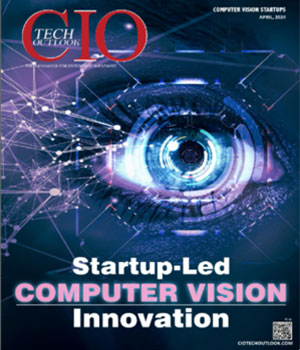

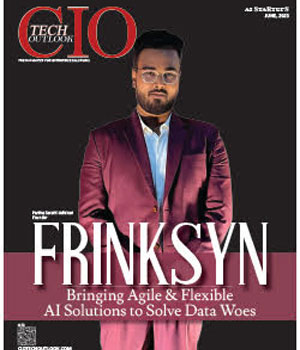
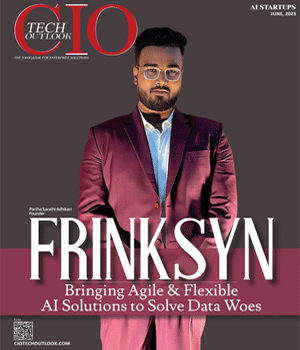
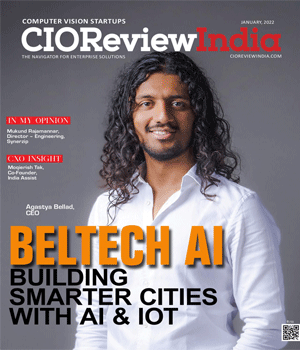
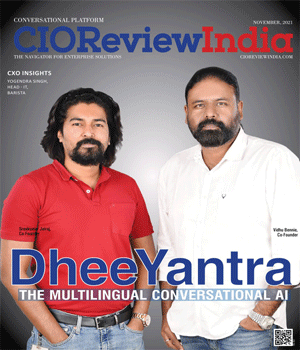
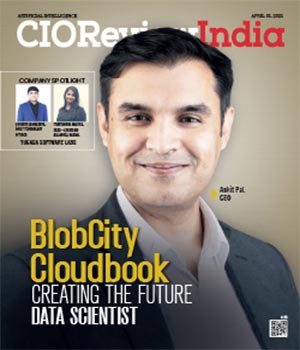

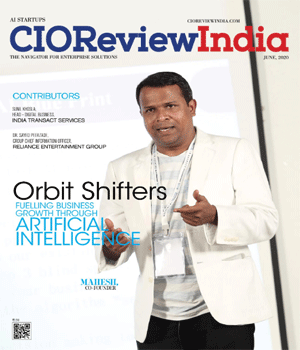
.jpg)
.jpg)
.jpg)
